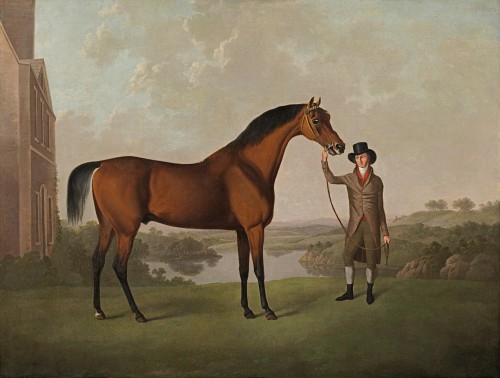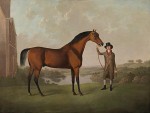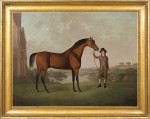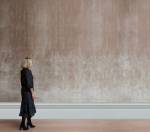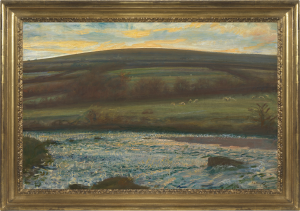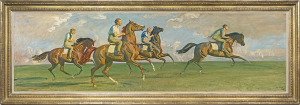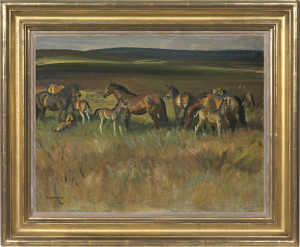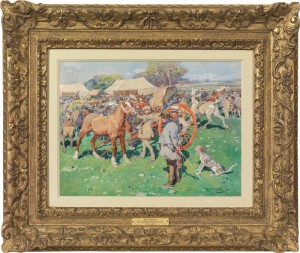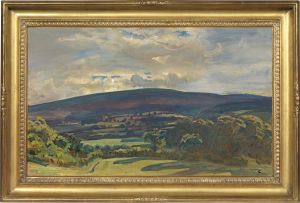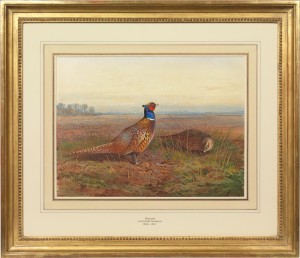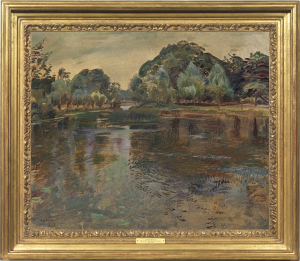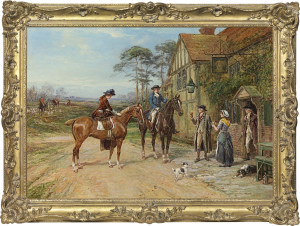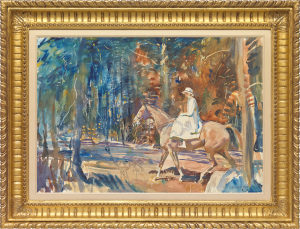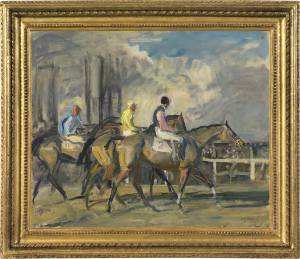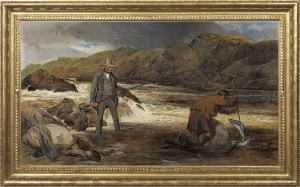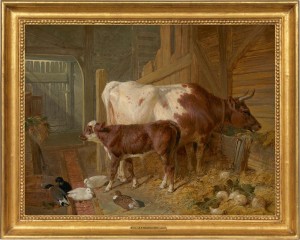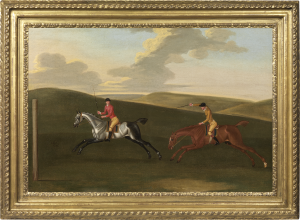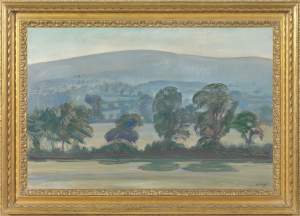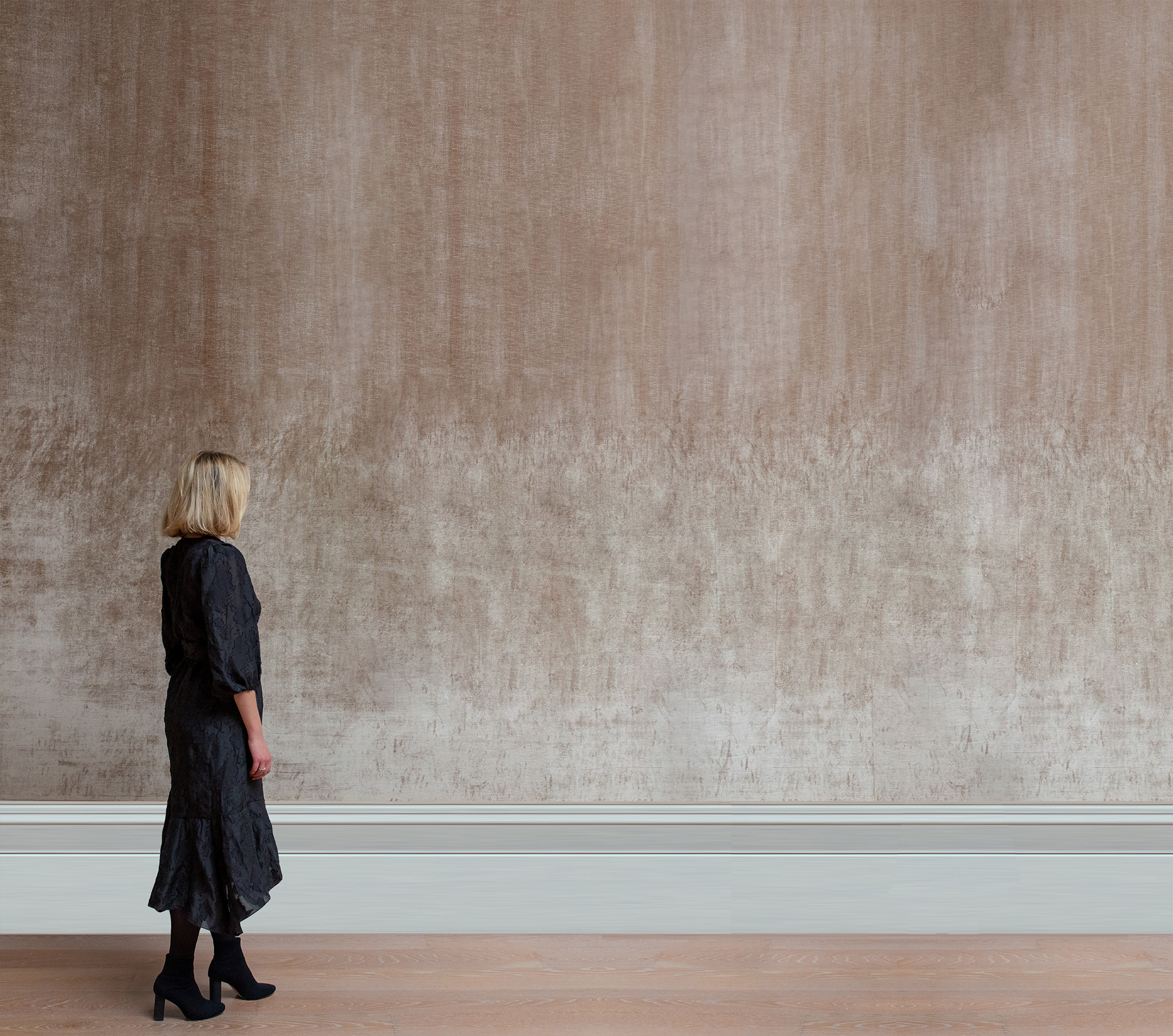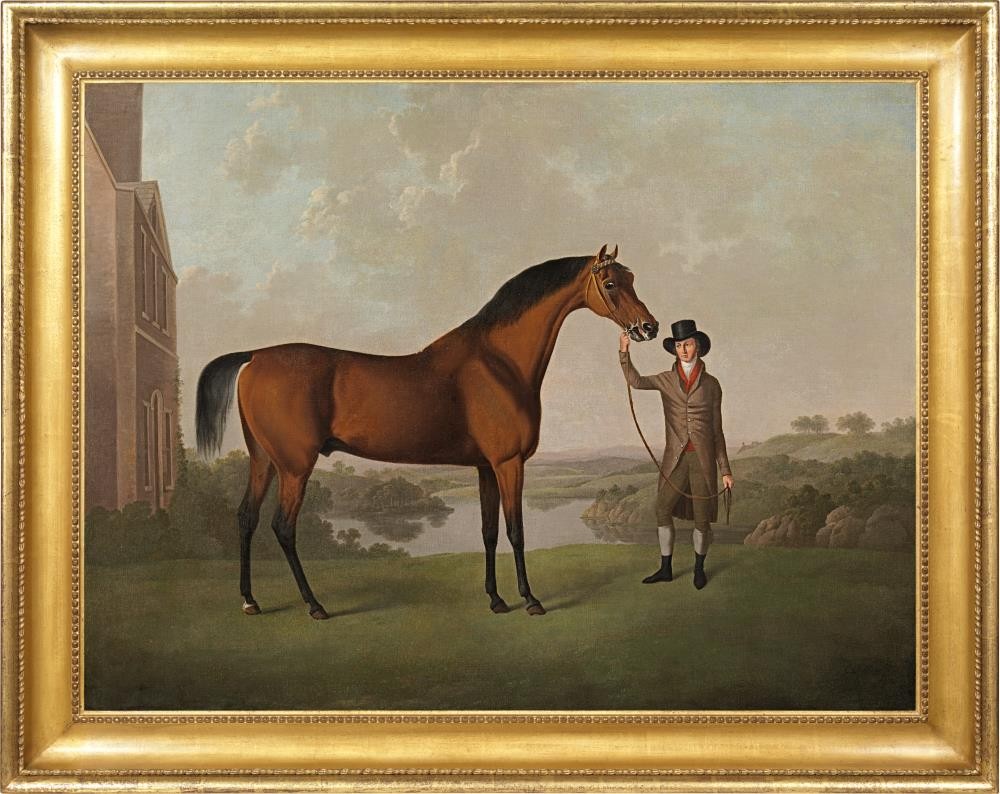Charles Towne
Mr Thomas Ewart's bay racehorse held by a trainer in the grounds of his country house, Everton
Oil on canvas: 32 x 42.5 (in) / 81.3 x 108 (cm)
Signed lower right: Chas Town / Pinx
This artwork is for sale.
Please contact us on: +44 (0)20 7493 3939.
Email us
CHARLES TOWNE
Wigan 1763 – 1840 Liverpool
Ref: BZ 221
Mr Thomas Ewart's bay racehorse held by a trainer in the grounds of his country house, Everton
Signed lower right: Chas Town / Pinx
Oil on canvas: 32 x 42 ½ in / 81.3 x 108 cm
Frame size: 39 x 48 ½ in / 99.1 x 123.2 cm
Painted in the 1790s
Provenance:
Private collection, UK
Sotheby’s London, 28th November 1973, lot 161
Arthur Ackerman and Sons, London, 1975
Private collection, UK
Charles Towne spent the beginning of his career in Liverpool, making his first equestrian portraits in the early 1790s. Towne was influenced by the work of the Liverpool-born painter George Stubbs (1724-1806), whose Haymakers and Reapers Towne copied from memory in 1787. As in the paintings of Stubbs, Mr Thomas Ewart’s racehorse is shown in noble profile, as if cut on a Roman cameo, emphasizing his fine crest and alert stance. He rolls an intelligent eye towards the spectator and slightly bares his teeth, a picture of controlled power. Like most thoroughbreds, this horse probably descended from the Darley Arabian, sent from Aleppo to England in 1704 by Thomas Darley, an Aleppo merchant and son of a Yorkshire squire[1]. Interbred with Turkoman horses from the steppes and English and Irish strains, the Darley Arabian’s descendants formed the bedrock of the racing thoroughbreds in a sport that was flourishing by the 1790s.
Horse and trainer are set by Ewart’s country house, which seems to have been in Everton, north of Liverpool’s town centre. Rolling countryside in the 1790s, Everton was increasingly peppered with the elegant Georgian mansions of rich merchants, such as the house depicted here. Towne has set the scene within a landscape of great sensitivity, featuring rocky outcrops falling towards a glassy lake, in which trees are reflected. Over everything arches a magnificent sunrise, fretted with clouds.
CHARLES TOWNE
Wigan 1763 - 1840 Liverpool
Charles Towne specialised in horse and dog portraiture and landscape, rendered with delicacy and detail. Towne (the spelling of his name he used after 1799) was born in Wigan, the third child of Robert and Mary Town. Charles was selling his drawings by the age of eight and at twelve walked to Leeds to work for the landscape artist John Rathbone. He then joined his brother in Liverpool, becoming a coach- and ornamental painter and japanner. He worked in Lancaster and Manchester, returning to Liverpool by 1785 to marry a widow, Margaret Harrison.
Towne exhibited a landscape at the Liverpool Society for Promoting Painting and Design in 1787 and copied from memory George Stubbs’s exhibits, Haymakers and Reapers. Towne was influenced by Stubbs, another Liverpool-born painter, in his equestrian portraits, the earliest of which dates from 1792. Towne divided his time between Liverpool and Manchester, with a visit to London in 1797. There he visited the studio of Philip de Loutherbourg, whose work influenced his Highland scene The monarch of the Glen, 1797 (Walker Art Gallery, Liverpool).
From 1799 to 1804 Towne lived in London, exhibiting at the Royal Academy in those years. He became a friend of the rackety George Morland, emulating his rustic landscapes and, more unfortunately, his life. By 1798 Towne was making £600 a year, yet spent money as fast as he could earn it: ‘he had regular encounters with burglars, bailiffs and unscrupulous dealers’[2]. He returned to Liverpool around 1810 and became a founder member of the Liverpool Academy, serving as its Vice-President 1812-13 and exhibiting there 1810-13 and 1822-25. He exhibited at the Royal Manchester Institution 1827-33. From 1813 Towne also worked as a picture restorer. He seems to have travelled widely in the north of England to paint horses and dogs, but the majority of his clients were Lancashire and Cheshire gentry. Towne died in Liverpool in 1840.
The work of Charles Towne is represented in the Walker Art Gallery, Liverpool.
[1] Christopher McGrath, Mr Darley’s Arabian, London 2017, p.25.
[2] Alex Kidson, ‘Towne [Town], Charles’, Oxford Dictionary of National Biography, 2004.

